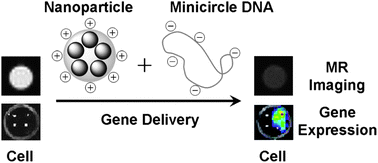Researchers from the Chinese Academy of Sciences have developed a potential magnetic resonance imaging (MRI) gene delivery vehicle by functionalising superparamagnetic iron oxide (SPIO) nanoparticles with an amphiphilic stearic acid-modified gene transfection agent, polyethylenimine (PEI).
The stearic acid-PEI conjugates were used to form clusters of SPIO nanoparticles via self-assembly. The stearic acid-PEI-SPIO nanocomplexes were employed as MRI contrast agents and displayed an imaging sensitivity limit of 1.5 µg ml-1 Fe, which is essential for effective molecular imaging applications. The authors demonstrated that the nanoparticle conjugates could be used to effectively shield minicircle (mc) DNA from enzymatic degradation, with transefected MCF-7 cells revealing increased luciferase expression with minimal cytotoxicity. The magnetic nanoparticle conjugates show potential use in nanomedicine for non-invasive MRI gene delivery.
By Dr Lee Barrett
Read this Nanoscale article in full today:
Self-assembled magnetic theranostic nanoparticles for highly sensitive MRI of minicircle DNA delivery
Qian Wan, Lisi Xie, Lin Gao, Zhiyong Wang, Xiang Nan, Hulong Lei, Xiaojing Long, Zhi-Ying Chen, Cheng-Yi He, Gang Liu, Xin Liu and Bensheng Qiu
DOI: 10.1039/C2NR32438E











